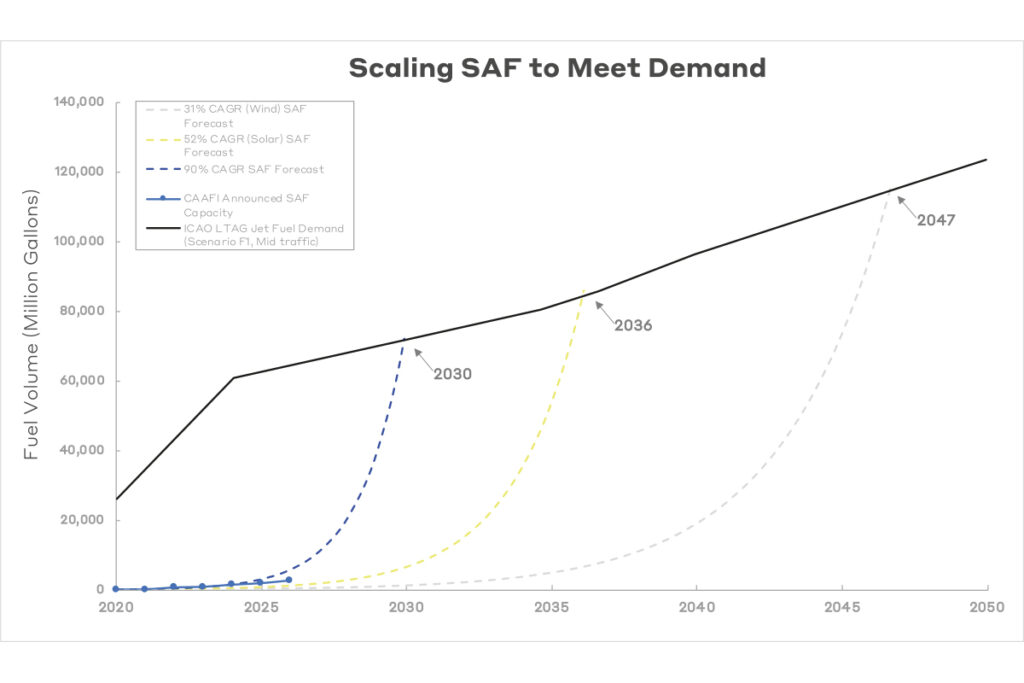The aviation industry’s shift towards sustainable fuels could be a critical pathway to greener mobility
Words by Karan Karayi
Ever since the Wright brothers took flight, aviation has been a thread binding humanity together, connecting diverse cultures and economies while enabling them to soar on higher growth trajectories. As a critical cog in the global growth engine, it is essential that the aviation industry continues to take flight, just in a greener manner than before.
In this spirit, the sector has made a commitment to achieve net-zero emissions by 2050. It is a lofty ambition, but one that can be achieved with the right commitment by way of investments, and ingenious thinking on the part of innovators. Think back to the early 90s, where wind and solar cost tens of times more than what it does today. A concerted strategy of continuous investments in renewable energy technology have helped the renewables industry grow exponentially. The will of Corporate leadership and financial ingenuity were also a major factor in its growth, and history needs to repeat itself to make flying the skies clean and green.
Enter SAF
Sustainable Aviation Fuel (SAF) is an immediate and scalable solution to decarbonising the industry. To those unaware of it, it’s chemically identical to traditional aviation fuel made from fossil fuels, except that SAF is a mix of hydrocarbons that relies on carbon atoms from organic and waste materials known as feedstock. These include waste oils, algae, forest residues, municipal solid waste, and industrial gasses, as well as atmospheric CO2. SAF helps reuse the carbon that would have instead been an atmospheric emission, and in this manner can lower aviation CO2 emissions by up to 100% compared to conventional jet fuel.
This is why it’s a hot topic among those in the industry, but there is a long way to go to scaling it up to a level where it truly enters the mainstream. Currently, SAF accounts for less than 1% of fuel used in airplanes, leading to some to say that it will only see widescale use after several years or decades. However, the World Economic Forum’s Clean Skies for Tomorrow (CST) initiative outlined a vision of scaling production that would see 100 million domestic passengers across India be transported on at least a 10% SAF blend by 2030.
Additionally, a white paper published by Boom Supersonic shows that a rapid scaling of SAF production to fully satisfy demand is possible by 2040 if public and private sectors work closely together. Reducing carbon emissions will provide enormous economic
and health benefits across industries and societies, improve sustainability, and help keep the planet liveable for future generations.

The compelling reasons to go green
As India seeks to pursue its growth ambitions, its energy consumption will only soar further still. With population soaring by 8.47 crore since 2015, and the GDP posting an average growth rate of 6.21% from 2006 until 2023, India will be a critical player in meeting global net-zero commitments. One way of doing this is to increasingly embrace renewable energy.
With more Indians than ever taking to the skies, green aviation seems like a must more than an option. According to the DGCA’s Traffic Report for March 2023, Indian domestic airlines saw the number of passengers ferried grow by 51.7% during January – March 2023, with 375.04 lakh travellers taking to the skies as against 247.23 lakh fliers during the Jan – March 2022 period. Moving to SAF will not only help India play its part in achieve the UN’s Sustainable Development Goals, but also create the technological capabilities to create an aatma nirbhar bharat and achieve self-sufficiency when it comes to energy consumption and generation, a factor that will potentially come to define this decade and the next. The UN has dubbed the ten-year period until 2030 the “decade of delivery”, and India must stay ahead of the curve to sustainably meet the surging growth of Indian travellers that will doubtlessly be relentless.
A few factors make SAF the top choice to decarbonise aviation in the short to medium-term.
- Immediacy
As per the Intergovernmental Panel on Climate Change, the most critical time to reduce emissions is between now and 2030 if we are to keep warming well below 2˚C. Switching to SAF is an eco-conscious manner of keeping those temperature levels in check without disrupting the ecosystem, as SAF is compatible with existing technologies, infrastructure, and aircraft.
- Scalability
With the right investment behind it, SAF production can grow to cover 10% of total jet fuel sales by 2030, given there will be sufficient feedstock availability.
- Viability
As of now, SAF represents the only real short-term solution to reducing aviation emissions. Hydrogen is too dense, creating storage issues, while battery technology has not evolved to the point where it can do away with the currently heavy energy source, making electric flights a present impossibility. While these might develop in the long-term, they might never represent a long-haul option.
- Wide-ranging benefits
Not only does SAF produce less particulate matter as compared to other aviation fuels, but it will also create several jobs in addition to building capabilities of the existing workforce.
A NEW GROWTH RUNWAY
While SAF costs are currently prohibitive, it is expected that the cost of this green fuel will come down from its current level of more than double that of fossil fuels once economies of scale are achieved.
Sustainability is an area of increasing focus for industries, and the aim to decarbonise the aviation sector will need multiple stakeholders to shoulder responsibility. This will call for the use of myriad levers, such as cutting-edge technology, increased investment, greater co-operation, and increased deployment of sustainable aviation fuel. This is not something that can happen in isolation or as a piece-meal solution; it needs to be a truly global effort that leaves no one behind. Only then can the runway for growth be cleared.


